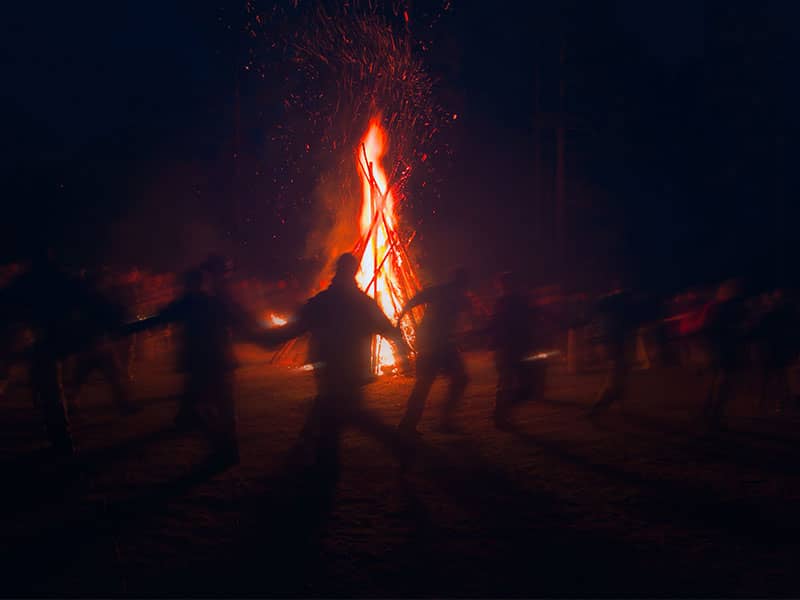This traditional Irish recipe produces a wonderful loaf, but it does need to be eaten quickly. Soda bread tends to go dry and crumbly very rapidly. As it is so delicious, this is usually not a problem.
2 cups, whole meal flour
2 cups, all-purpose white flour
1 tsp. salt
3 tsp. baking powder
1 tsp. baking soda
1 egg
7/8 pt. Buttermilk (or a mixture of 2/3 live yogurt and 1/3 water, if buttermilk is unavailable)
Mix all the dry ingredients in a large mixing bowl. Beat the egg and buttermilk (or yogurt and water) into the dry mixture. Turn out onto a lightly floured board and knead thoroughly until the mixture is smooth. Shape the dough into a couple of round shapes and place on a lightly oiled baking tray or lightly oiled loaf tins. The round shape is more than traditional, but be sure to incise a deep cross into the dough to represent the four main festivals of the Celtic calendar (it also helps the loaf to rise evenly).
Bake at 375 degrees F (190 degrees C/gas mark 5) for between 40 and 45 minutes. For a softer crust, wrap the loaf in a clean towel after it has cooled.
This is a very colorful and attractive salad that uses several of the herbs and plants that are associated with Lughnasa. The edible flowers are a particular feature of this dish and both nasturtium and borage can be grown in large pots outside in your yard. Nasturtium is especially easy to grow; its large seeds make it ideal and great fun for children to cultivate.
Nasturtium is associated with the sun and with male strength--ideal for Lughnasa. Its Latin name tropaeoleum means "a trophy"; the flowers were said to represent the golden helmet of a Trojan warrior and the leaves his round shield. Borage is also associated with warriors and was one of the magical herbs of the ancient Celts. Its name is possibly derived from borrach, the Celtic word for a courageous person. Borage was widely cultivated during mediaeval times. There was a saying that "a garden without borage is like a heart without courage."
1 tbsp. olive oil
1½ cups cooked corn
½ cup peas
½ cup black olives, halved and pitted
1 large apple, diced
1 tbsp. finely chopped fresh herbs (basil, borage leaves, fennel)
Pinch of black pepper
½ cucumber, finely chopped
Nasturtium flowers
1 tbsp. borage flowers
Lightly toss all the ingredients in the olive oil, except the flowers. Pour into a bowl and decorate with the nasturtium flowers and sprinkle with the borage flowers (yes, they are edible!). The nasturtiums have a peppery taste rather reminiscent of watercress. This is a fairly strong-tasting salad, so it is best served with something bland.

